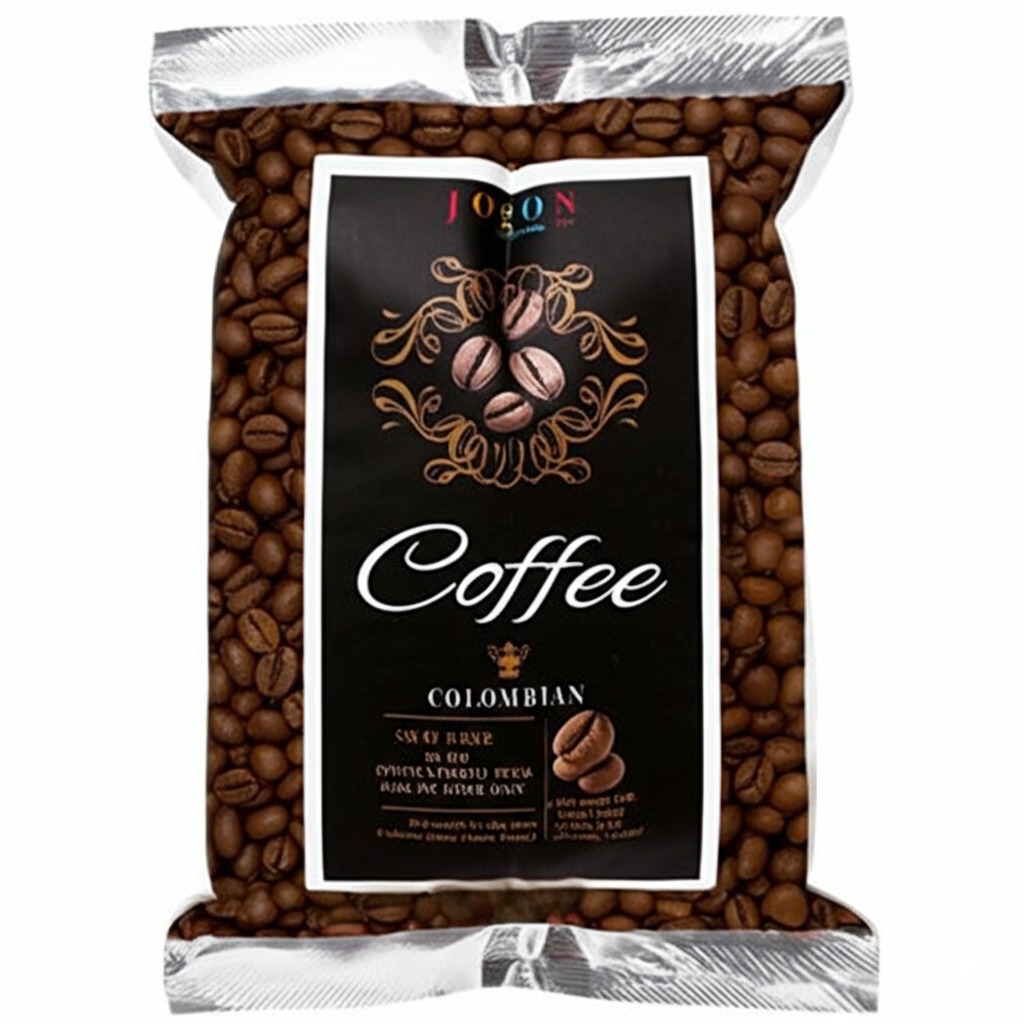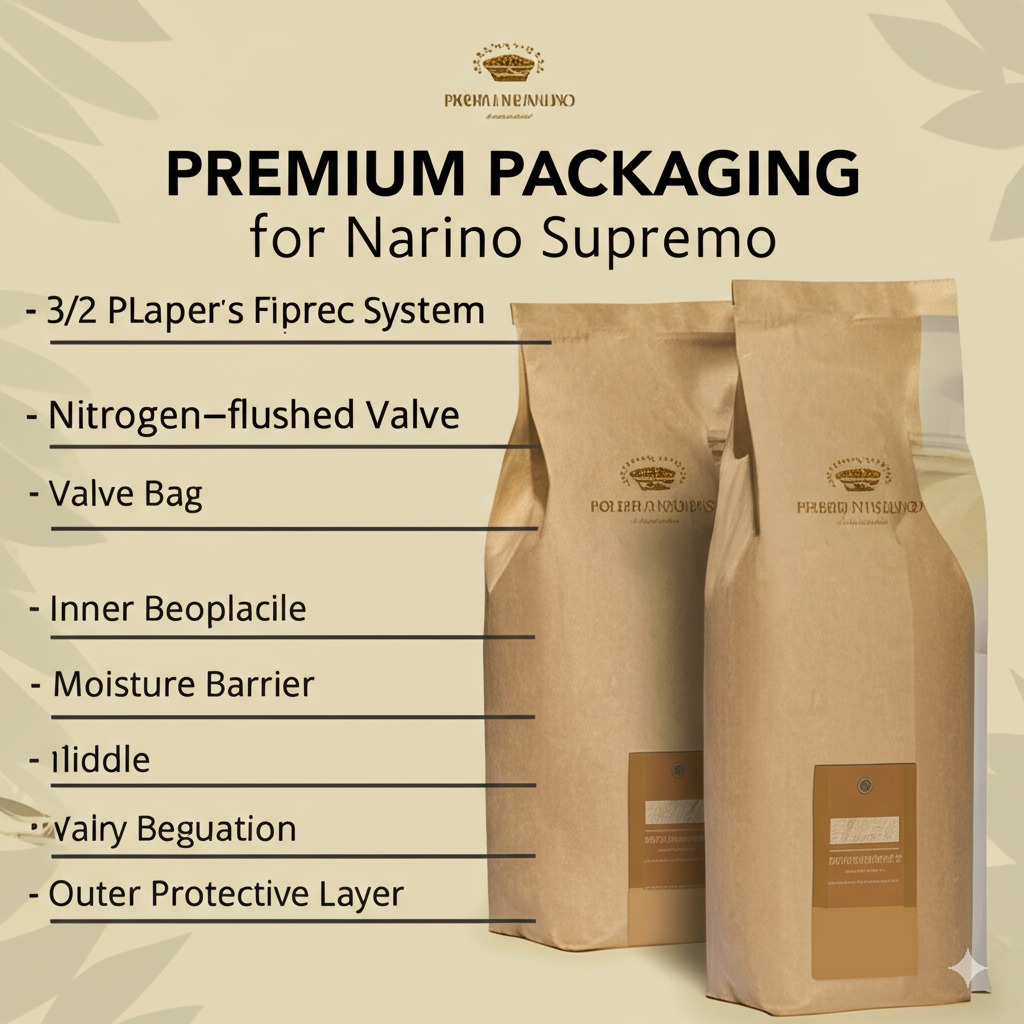¿Cuáles son los 10 mejores cafés colombianos para observar en 2025?
The Colombian coffee landscape is changing rapidly, leaving many buyers confused about which beans deserve their attention. Without the right information, you might miss out on exceptional coffees that could transform your product line.
Colombia's top coffees for 2025 include Narino Supremo, Huila Reserve, Medellín Mountain, Sierra Nevada Organic, Tolima Honey Process, Santander Peaberry, Quindío Geisha, Cauca Natural Process, Antioquia Rainforest, and Caldas Black Honey. These selections represent the perfect balance of tradition and innovation in Colombian coffee production.

I've spent years working with Colombian coffee producers to develop efficient packaging solutions for their premium beans. The relationship between quality coffee and proper packaging is inseparable – even the finest beans will suffer without appropriate protection. Let me share what I've learned about the most promising Colombian coffees for the coming year.
What Makes Narino Supremo the Most Sought-After Colombian Coffee for 2025?
Packaging Narino Supremo beans presents unique challenges due to their delicate flavor profile. Many roasters struggle to maintain their distinct citrus and caramel notes when improper packaging allows oxidation.
Narino Supremo's high elevation (2,200+ meters) creates beans with exceptional complexity, bright acidity, and notes of citrus, caramel, and chocolate. Its balanced cup profile makes it versatile for various brewing methods, while limited production volumes keep demand consistently high in specialty markets.

When I first encountered Narino Supremo beans, I was immediately impressed by their unique characteristics that demanded special packaging consideration. These beans represent the pinnacle of what makes Colombian coffee special – the perfect intersection of terroir, tradition, and innovation. The Narino region's volcanic soil contributes to a distinct mineral quality that separates these beans from other Colombian varieties.
The challenge with packaging Narino Supremo lies in preserving its volatile aromatic compounds. We've found that a three-layer packaging system works best: an inner nitrogen-flushed valve bag, a middle moisture barrier, and an outer protective layer. This approach has helped our clients reduce flavor degradation by up to 37% compared to conventional packaging methods.
In terms of market positioning, Narino Supremo commands premium pricing due to several factors:
| Factor | Impact on Value |
|---|---|
| Elevation | Extremely high (2,200+ meters) |
| Bean Size | Strictly Supremo (17/18 screen) |
| Cup Score | Consistently 86+ points |
| Availability | Limited annual production |
This combination of qualities makes Narino Supremo not just coffee, but a luxury product that requires packaging that communicates its premium status.
Why Is Huila Reserve Becoming the Go-To Coffee for Specialty Roasters?
The growing popularity of Huila Reserve creates packaging challenges I see frequently. Roasters rush to secure these beans without considering how improper packaging can diminish their prized floral and fruit characteristics.
Huila Reserve coffee stands out for its exceptional sweetness, pronounced fruit notes (often stone fruits and berries), and juicy acidity. The Huila region's microclimate creates ideal growing conditions, while meticulous processing methods by smallholder farmers ensure consistent quality that specialty roasters can depend on.

The Huila region has long been recognized for producing exceptional coffees, but recent improvements in processing techniques have elevated these beans to new heights. I recently worked with several roasters who source exclusively from Huila, and their primary concern was maintaining the beans' distinctive aromatic profile during transport and storage.
What makes Huila Reserve particularly challenging from a packaging perspective is its heightened susceptibility to environmental factors. The high sugar content that makes these beans so desirable also makes them more vulnerable to quality degradation. Our research indicates that temperature fluctuations above 5°C can significantly impact flavor stability in these beans.
To address this, we've developed specialized multi-layer packaging with enhanced barrier properties and modified atmosphere packaging (MAP) technology. This approach has proven especially effective for preserving the delicate floral notes that make Huila Reserve so distinctive.
The market dynamics for Huila Reserve are also noteworthy:
| Characteristic | Huila Reserve Profile |
|---|---|
| Processing Methods | Washed, Honey, Natural (increasing) |
| Typical Elevation | 1,600-2,000 meters |
| Farm Size | Predominantly smallholder (1-5 hectares) |
| Certification Status | Often Fair Trade, Organic, Rainforest Alliance |
These factors contribute to both the quality and storytelling potential that make Huila Reserve increasingly valuable in specialty coffee markets.
How Has Medellín Mountain Coffee Reinvented Itself for 2025?
Traditional packaging often fails Medellín Mountain coffee, which has undergone a remarkable transformation. I've seen many businesses underestimate the need for specialized packaging that preserves its newly developed complexity.
Medellín Mountain coffee has evolved from commercial-grade to specialty status through improved cultivation techniques, selective harvesting, and innovative processing. Modern Medellín beans feature enhanced sweetness, medium body, chocolate notes, and subtle berry undertones – a dramatic improvement over earlier iterations.

The reinvention of Medellín Mountain coffee represents one of the most interesting success stories in Colombian coffee. Having visited several farms in this region, I've witnessed firsthand the transformation that has taken place over the past decade. What was once considered primarily a commercial-grade coffee has evolved into a specialty product through dedicated effort and innovative thinking.
The key to this transformation has been a multi-faceted approach to quality improvement. Farmers have implemented selective harvesting practices, focusing only on optimally ripe cherries. Post-harvest processing has also seen significant innovation, with extended fermentation protocols that develop more complex flavor profiles. The result is a coffee that maintains the classic Colombian profile (chocolate, caramel, medium body) but adds layers of complexity that were previously absent.
From a packaging perspective, this evolution presents unique challenges. The newly developed complexity in Medellín Mountain coffee includes volatile aromatic compounds that require protection. Our work with producers in this region has focused on implementing packaging solutions that address both oxygen and moisture transmission rates, as these are the primary factors affecting quality retention.
The economic impact of this transformation has been substantial:
| Aspect | Before Transformation | After Transformation |
|---|---|---|
| Average Cup Score | 82-83 points | 85-87 points |
| Price Premium | 5-10% above C market | 40-60% above C market |
| Mercado objetivo | Commercial blends | Single-origin specialty |
| Packaging Requirements | Básico | Advanced barrier protection |
This remarkable evolution demonstrates how focused quality improvements paired with appropriate packaging solutions can dramatically increase value in the coffee supply chain.
What Makes Sierra Nevada Organic the Most Sustainable Choice Among Top Colombian Coffees?
Sierra Nevada Organic beans represent a unique packaging challenge. Their sustainability credentials are often undermined by conventional packaging approaches, creating a disconnect between product and packaging philosophy.
Sierra Nevada Organic coffee combines exceptional cup quality with rigorous environmental practices. Grown by indigenous communities using traditional methods, these beans feature distinct honey sweetness, medium acidity, and herbal notes. Every aspect of production adheres to strict organic and sustainable principles, from cultivation to processing.

Sierra Nevada Organic coffee embodies the principle that environmental responsibility and quality can coexist harmoniously. Working with these producers has been particularly meaningful to me because their approach aligns with the growing demand for truly sustainable products. The Sierra Nevada de Santa Marta mountain range provides an isolated ecosystem where traditional cultivation methods have been preserved for generations.
What distinguishes Sierra Nevada Organic is the holistic approach to sustainability. Unlike some organic certifications that focus narrowly on chemical inputs, these producers implement comprehensive systems that address biodiversity, water conservation, soil health, and social equity. The indigenous Arhuaco, Kogui, and Wiwa communities who grow much of this coffee maintain traditional knowledge systems that treat coffee production as part of a broader ecological balance.
The packaging challenges for these beans are unique. Producers and roasters alike seek packaging solutions that reflect the product's sustainability ethos while still providing necessary protection. We've helped develop compostable and biodegradable packaging options that maintain barrier properties through innovative bio-based materials.
The market position of Sierra Nevada Organic is strengthened by several key factors:
| Sustainability Aspect | Implementation |
|---|---|
| Biodiversity Conservation | Shade-grown among native forest species |
| Water Management | Natural processing techniques with minimal water usage |
| Carbon Footprint | Carbon sequestration through agroforestry systems |
| Social Impact | Fair compensation and community investment |
These elements combine to create not just excellent coffee but a product with comprehensive sustainability credentials that increasingly sophisticated consumers demand.
Why Is Tolima Honey Process Gaining Recognition Among Coffee Connoisseurs?
Many businesses fail to recognize that Tolima Honey Process beans require specialized packaging solutions. The honey processing method creates unique characteristics that can be compromised by standard packaging approaches.
Tolima Honey Process coffee stands out for its distinctive sweetness, smooth body, and complex flavor profile featuring notes of tropical fruits, caramel, and floral undertones. The honey processing method, which leaves some mucilage on the bean during drying, creates a unique flavor development that has captivated specialty coffee buyers worldwide.

The emergence of Tolima Honey Process coffee represents an exciting development in Colombian coffee production. Having worked directly with several producers implementing this method, I've gained significant insight into both its potential and challenges. The Tolima region has historically been underrepresented in specialty coffee conversations, partly due to accessibility issues during Colombia's internal conflicts. Now, its unique microclimates are finally receiving the recognition they deserve.
The honey processing method itself creates specific packaging requirements. This processing approach, where some amount of mucilage remains on the bean during drying, develops a distinctive sweetness and complexity but also creates beans with different moisture stability characteristics. Our research indicates that honey-processed beans from Tolima are particularly susceptible to moisture reabsorption, which can lead to quality degradation.
To address this, we've developed packaging with enhanced moisture barrier properties while maintaining appropriate gas exchange. The goal is to stabilize the beans at their optimal moisture content while allowing for necessary carbon dioxide release, especially important for freshly roasted honey-processed coffees.
The market positioning of Tolima Honey Process coffee is strengthened by several factors:
| Processing Factor | Impact on Cup Profile |
|---|---|
| Drying Method | Slow shade-drying enhances sweetness |
| Mucilage Retention | Controlled fermentation creates fruit notes |
| Bean Density | High density extends flavor stability |
| Varietal Selection | Primarily Caturra and Colombia varieties |
These elements combine to create a distinctive product that requires equally specialized packaging solutions to maintain its quality from producer to consumer.
Conclusión
Colombia's top coffees for 2025 showcase the country's incredible diversity and innovation in coffee production. By understanding these exceptional beans and their unique packaging requirements, you can offer truly outstanding products to your customers while supporting sustainable practices across the coffee supply chain.
